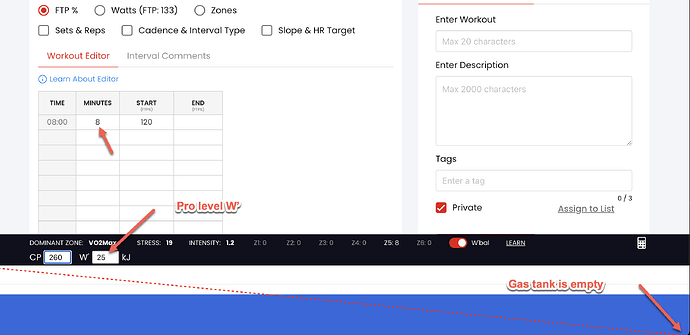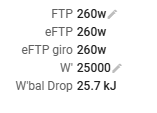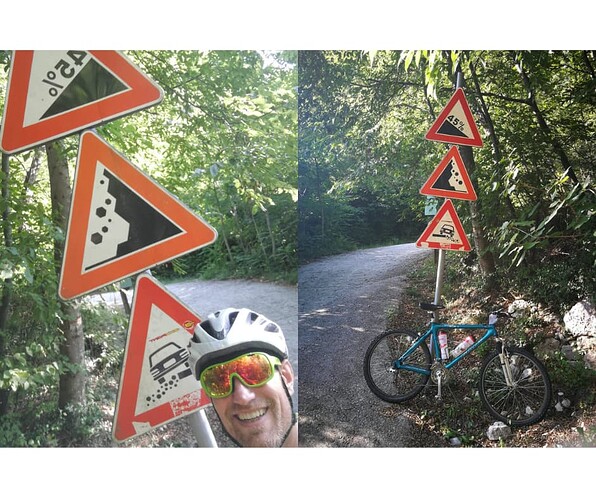Somehow I missed this post, so sorry to tune in late.
@BlackTek: Your question is a typical one. You think you have a short-term goal. As Alex pointed out, you can gain much more over the long term. Your schedule should always be focused on what you can achieve over the following years. In a long-term goal, you can make significant changes and focus on every aspect—gear, nutrition, training, and recovery.
The gearing you have is actually fine for this purpose. I use a 36-36 for climbing, and that gets me up to 16%. Steeper will make me grind. I did the Scanuppia in Italy. It is 45%, with an average of 22% over the first 4km. It is insane. The next 4 km are steep too, but normal. I did this on an mtb (an old giant cadex mcm from the ‘90 ‘s  ), because there is no way you/ I can do this on a race bike with standard gearing. If I ever do this again, I would use a 29’ mtb with a 27,5’ front wheel. Seriously
), because there is no way you/ I can do this on a race bike with standard gearing. If I ever do this again, I would use a 29’ mtb with a 27,5’ front wheel. Seriously 
From the training perspective, you could not do this anaerobically. As Alex points out, your max lies at 8 minutes, and even that is a stretch for amateurs like us. But at 20%, you have no choice. What I do for my clients is that I calculate how much power it will cost them to get up a certain gradient. I find the best climbing profile I can get and split it out for them.
At 20% you can also zig-zag to make it easier.
@MedTechCD: The main function of a dropper post is to get down safely without the saddle hindering you from positioning your body over the back wheel and moving the mtb and/ or your body sideways.
In general, an mtb seat is positioned just a little bit lower.
Keep on building that Athlete Lifestyle with consistent training, recovery and nutrition and you can have all the fun you need.
Coach Robert
PS: the Scanuppia was so steep (and my bike so old), that I got to a stand regularly. One time I couldn’t get my foot out of the pedal fast enough, lost my balance, and fell sideways. My wrist and ribs hit the fence, my bottle fell out, rolled into the ravine, and I slid down two meters over the “road” (It wasn’t really a road, more a pouring of concrete). I cut my arm, which was bleeding, broke two ribs, and still had to climb 5km’s.  But I finished the ride.
But I finished the ride.
There where only two kinds of vehicles on that road. 4x4’s and Fiat Panda’s. I got a whole new respect for Fiat. 
And now I’ll be in front of the tv, watching Paris-Roubaix. I’d say this will be an epic one. Any predictions?


